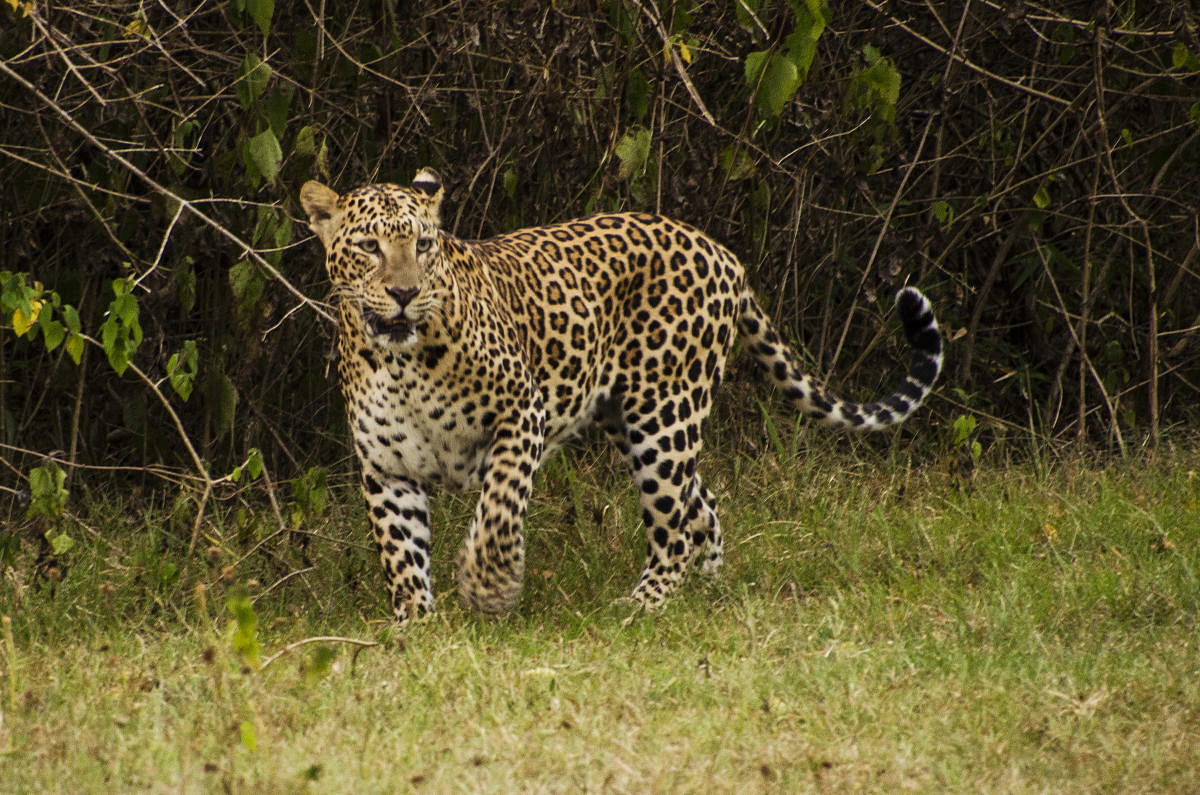
The state of Karnataka has been endowed with copious natural resources, be it the dense jungles or the hills of the Western Ghats, or the extensive network of rivers. Naturally, the vast tracts of forests are home to a rich variety of wildlife. Little wonder then that the state has many wildlife sanctuaries, besides five well-known tiger reserves.
That Karnataka has the highest population of tigers in the country is something to be proud of. Among these, the Bandipur Tiger Reserve ranks high in popularity not only because of easy accessibility but for the almost assured sightings of the big cats. Spread over 874 sq km, at the confluence of the tapering slopes of the Ghats with the undulating terrain of the Deccan plains, the reserve is a heterogeneous habitat with dry and moist deciduous forests, shrublands and scrub jungles. With river canals and a cluster of lakes, the environment is highly conducive for wildlife. Bandipur forms a major portion of the larger Nilgiri Biosphere Reserve, an important protected area in Southern India.
Near yet far
Being close to Bengaluru, this was easily the preferred destination when I thought to spend a couple of days in the wilderness. Driving from Bengaluru on the Ooty Road via Mysuru, I landed at the Bandipur Safari Lodge, situated right on the highway, and checked into the cottage. After a sumptuous lunch and a little rest, it was time for the afternoon safari. Nataraj, a naturalist and my old friend, took us to the western part of the sanctuary. As the drive began, we were greeted with the usual fare of chital herds, peacocks and many birds. A few red spurfowls crossing our path was an interesting beginning. As we drove on slowly, a huge tusker emerged from the dense jungle and strolled along ahead of us. We followed for a km or so when it stood aside as if to give way for us. Getting as close as 30 feet afforded a magnificent view of the elephant. But when it gave out a deafening trumpet, the whole forest reverberated.
Moving fast, we came to Kadamathur Kere, where three tigers had been resting probably after feasting on a kill. Being far from the game road, they could hardly be seen. Back to the resort for a hot lunch and siesta, we embarked on the afternoon safari to the same spot to look for tigers. Even a wait of an hour and a round trip around the lake did not yield any sighting. Time was running out and the light was fading. Just then the guide received a call about a leopard near Tavarekatte Lake, and we made it there quickly with the efficient driving of Bomma, our driver. A fleet of jeeps with excited tourists was already in place.
As if it was waiting for just our arrival, a leopard slowly creeped out of the bushes and relaxed on the ground for a while before crossing the road and sneaking away into the forest. Satisfied with the awesome sighting, we drove back for a lovely dinner and campfire which made it a celebration of sorts.
The following morning’s safari was rather uneventful but for a pair of wild dogs and a few birds like racket-tailed drongo, brown fish owl and a crested serpent eagle. The afternoon was utilised to visit Gopalaswamy Betta. At the top of the hill is the colourful temple of Himavad Gopalaswamy so called because of the constant dripping of water drops on the deity. To make the trip more interesting, our guide took us to a village, Haggadahalla, on the periphery with a settlement of Jenu Kuruba tribes. Here is a huge banyan tree with a large canopy spreading over an acre.
The last safari in the morning deviated to the eastern side of the forest, which is generally plain with scrub jungles. Passing by a few gaurs, we got deep into the forest to be greeted by a lone tusker making a morsel of the grass. A long drive along the Mangala Dam culminated the safari and an exciting visit to Bandipur.